Dell U3011 Review: Dell's New 30-inch Flagship
by Brian Klug on January 13, 2011 9:17 PM ESTHardware Impressions and Specs
If there's one thing I've learned doing display reviews, it's that the 30-inch segment represents (as it should) the best of the best. Entries here have the most input options, features, best panels, and the highest resolution you can get for the money. It's a breath of fresh air to play with a real 16:10, 2560x1600 display after toying with 1080P monotony for so long. If the displays industry worked anything like the CPU industry, we'd have 300 PPI displays with no response lag, infinite contrast, and all for way less than we're paying now. If there was a new year's resolution display manufacturers should make, it's that they stop making 1080P panels in 2011.
Anyhow, today we're talking about the Dell U3011. I got the chance to review HP's 30 inch monitor, the ZR30w, back when it launched, and will use it as a mental comparison. The Dell U3011 is a refresh of the Dell U3008WFP, and brings a 10-bit per color panel with 12-bit internal processing, more input options, factory calibration (more on that later), and is supposedly 1 ms faster in the response time department.
The specs for Dell's new 30 inch display are in the table below:
| Dell UltraSharp U3011 | |
| Video Inputs | 2xHDMI, 2xDVI-D w/HDCP, 1xDisplayPort, VGA (D-SUB), Component |
| Audio Output | 3x3.5mm audio jacks (5.1 audio out supported) |
| Panel Type | H-IPS with CCFL Backlight (Panel: PH5NY07U076L) |
| Pixel Pitch | 0.2505 mm |
| Colors | 1.07 billion (30 BPP color - 12 BPC internal processing) |
| Brightness | 370 nits (typical) |
| Contrast Ratio | 1,000:1, or 100,000:1 (dynamic) |
| Response Time | 7 ms (GTG), 17 ms (GTX max) |
| Viewable Size | 30" (756.23 mm) |
| Resolution | 2560 x 1600 at 60 Hz |
| Viewing Angle | 178 degrees horizontal and vertical |
| Power Consumption (operation) | 250 watts (max), 110 watts (typical) |
| Power Consumption (standby) | 2 watts standby, 1 watt off |
| Screen Treatment | Matte/Anti-Glare, Hard Coating |
| Height-Adjustable | Yes: 3.55 inches travel |
| Tilt | Yes: 10 degrees - 20 degrees |
| Pivot | No |
| Swivel | Yes |
| VESA Wall Mounting | Yes: 100 mm x 100 mm |
| Dimensions w/ Base (WxHxD) | 27.34" (694.5 mm) x 22.5" (571.3 mm) x 8.32" (211.3 mm) |
| Weight | 27.72 lbs (12.6 kg) with stand, 20.40 lbs (9.3 kg) without stand |
| Additional Features | Integrated USB 2.0 hub with 4 USB ports, 7 in 1 media reader, 5.1 audio pass through, factory calibration |
| Limited Warranty | 3 years - repair or replacement |
| Accessories | Power, DVI, DisplayPort, VGA cables. Factory Calibration Report. |
| Price | U3011: $1349.00 |
So first up is the display itself. Aesthetically it's almost exactly what you'd expect from Dell in a monitor, and follows their relatively consistent industrial design quite well. The display bezel is entirely black plastic just like we've seen with almost every other Dell, and there's a huge square black stand.
The U3011 has a silver-colored strip that runs around the outside of the display, much like the ZR30w has. However, unlike HP's metal strip, Dell's is plastic. The display bezel on the U3011 is just under 1 cm thinner at the edge than HP's, though both get much thicker at the center.
The stand the U3011 comes with is decently sturdy, providing tilt, rotation and height adjustment, but no pivot. Height on the U3011 can adjust from about 3 cm to 12 cm from the top of the plastic stand to the bottom of the bezel. Dell advertises 10 cm of travel - I can definitely see that much travel, which is definitely welcome. The other added bonus is that HDMI, DVI, and DisplayPort cables don't crash into the plastic base and bend worrisomely even with the display at its lowest height adjustment setting. I wish the U3011 went up a bit higher, because it seems like I inevitably use the highest adjustment point whenever I'm connecting cables, but too lazy to rotate the whole monitor. It's just shy of being tall enough where I can squeeze my head underneath - oh c'mon, everyone does that, right?
There's also about 30 degrees of tilt in the up direction, and about 5 degrees downwards.
Rotation on the base is about +/- 30 degrees, which is more than sufficient. Thankfully, the base on the U3011 is nice and smooth through the rotation, with no annoying backlash or chatter which generally makes entire displays and desks shudder.
Dell has placed the 7 in 1 card reader (xD/SD/MS/MMC) on the left side of the U3011. Down below it are two of the four USB 2.0 ports connected to the U3011's internal hub.
The lower one has a power symbol which indicates that it's capable of supplying more current - 1.5 amps of it to be exact, for 7.5 watts of charging power. Though that should be more than sufficient to charge an iPad, connecting one resulted in the same "Not Charging" behavior one would see from a normal 500 mA port. It's unclear to me whether the USB charging specification is being implemented correctly on the display or not. Other devices charge fine, but likewise do so on normal 500 mA ports. In addition, the USB ports only provide power when the upstream USB-B port is connected - you can't use the ports to just charge devices without connecting the hub to something. I tested a 32 GB SD card in the reader, which worked just fine as well.
The backside of the U3011 is nothing new or special if you've seen Dell's other recent display designs. It's just scaled up to be larger, and looks the same. Personally, I find it classy and applaud the consistency, even if the Dell logo up top is positively gigantic (but then again, everyone does that). The stand has a cable routing port, but lacks positioning clips or guides like I've seen on other displays.
Finally, the I/O ports on the U3011 are where they should be at the base of the display, but high enough up that we don't run into cable routing issues. The U3011 also has a nice sticker facing outwards with all the ports positioned appropriately - something super useful when connecting things up from a weird contorted angle. The U3011 provides a ton of input options - two DVI-D ports, two HDMI 1.3a ports with Deep Color support, D-SUB for VGA, DisplayPort, and component video in. Moving along are the two remaining USB 2.0 downstream ports, USB-B upstream port, and lastly three 3.5mm audio out jacks for doing 5.1 audio pass through from HDMI. Oh, there's also a DC power jack in case you're using the Dell speaker bar with the U3011 which is an added accessory - we didn't get a chance to try that. I'd say the input options on the U3011 are impressive overall, just like we expect from a 30-inch display.
If you use your own VESA mounts with displays, the U3011 will work as long as you get one beefy enough for it. The weird part about the U3011's mounting arm is that it connects to the 100 mm VESA mount on the backside of the display with 4 T-10 Torx screws. That just seems like an obtuse choice for something which should be easily user-accessible. It's a small nit to pick, but this choice just really puzzles me since I doubt average users have all the Torx bits sitting around.
The U3011 is supposed to come calibrated from the factory, accompanied by a calibration report showing Delta-E tracking averaging below 5.0. Our U3011 came with no such report, and as we'll show later also didn't perform very well out of box in our color tracking validation test. We later learned that this is because our U3011 is a pre-production sample which is identical to the shipping model, just without factory calibration. In addition our panel was the A00 revision.
Last but not least is packaging. The U3011 packaging is generic and doesn't draw attention - there's Dell written on it, and U3011 on the corner. It's like the other Dell packaging I've seen before. What I found interesting is that the U3011 comes fully assembled and in one piece inside the box. The mounting arm is preattached, and two styrofoam pieces at top and bottom which hold it securely. The U3011 packaging is actually far smaller than HP's for the ZR30w.
More shots of the U3011 in our gallery below:



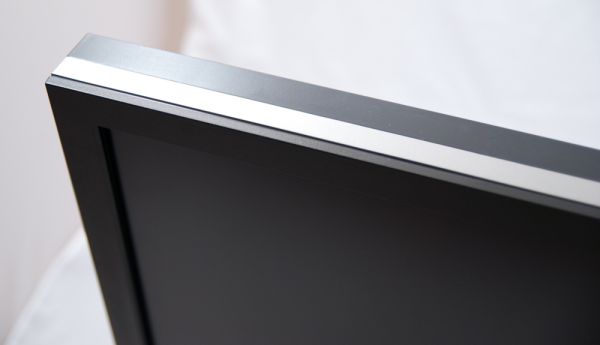

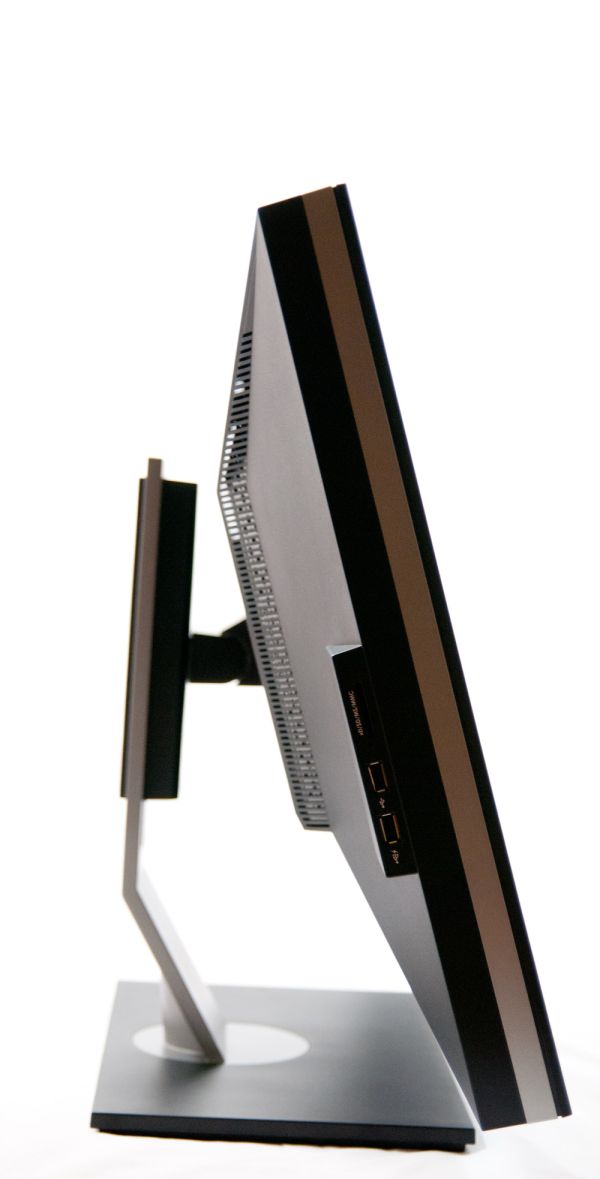
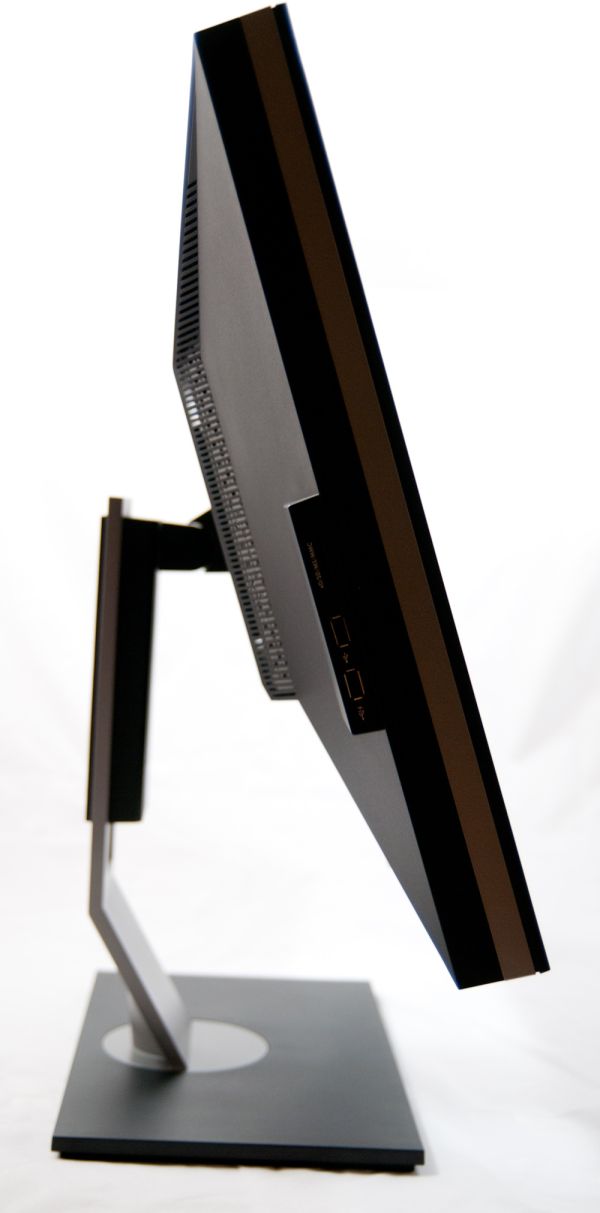
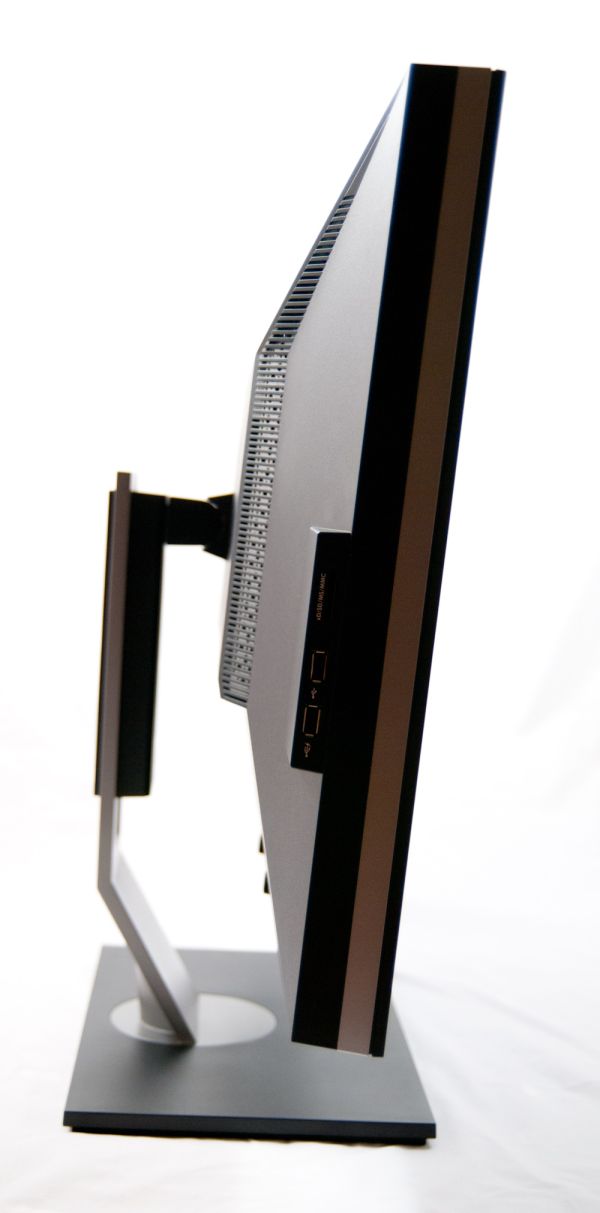
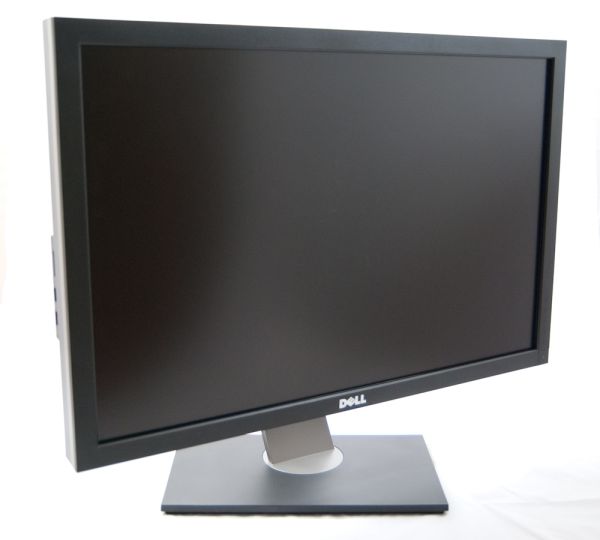
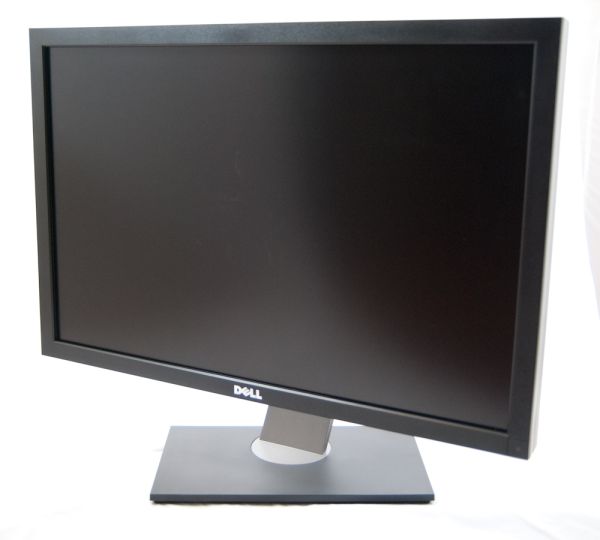
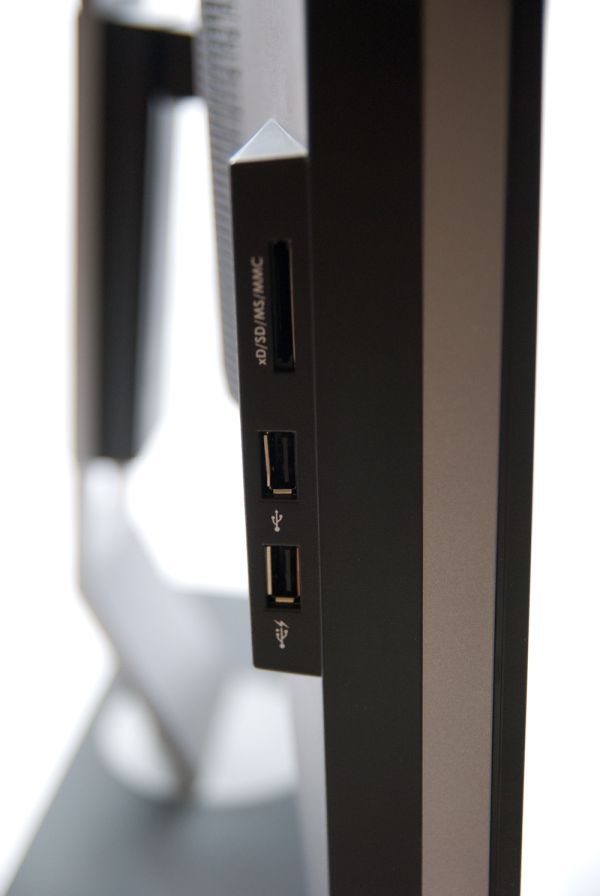
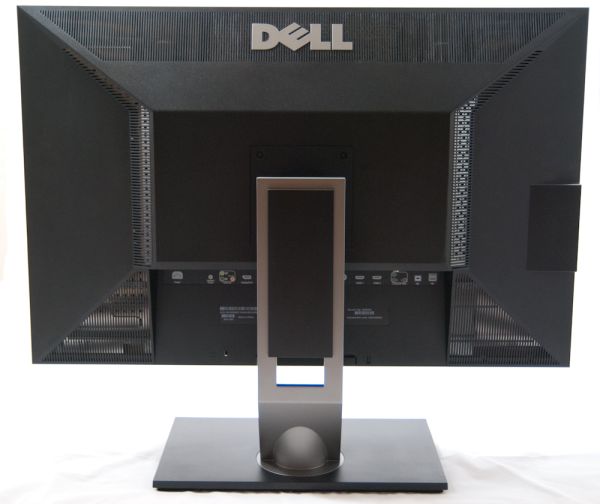
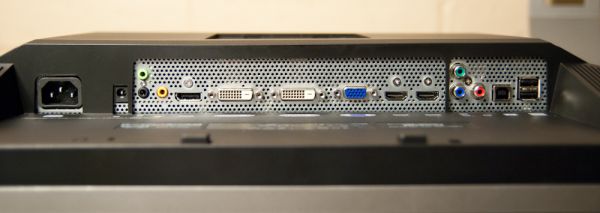

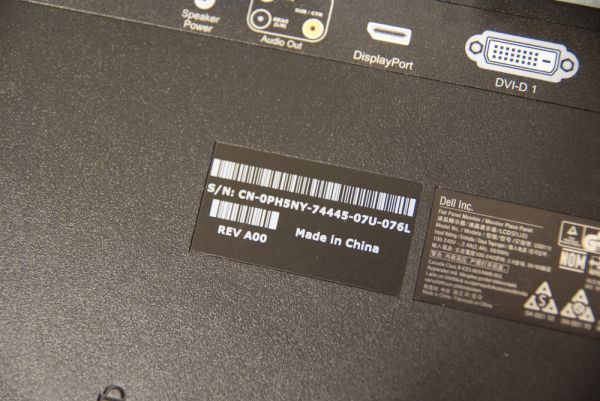















123 Comments
View All Comments
3dbomb - Saturday, January 15, 2011 - link
I currently have a 22" 1680x1050 monitor. Fujitsu Siemens. It's hard working with it. I use 3D software that really wants more screen real estate. Even 1920x1200 would be a step up for me.However I struggle with readability of text and fear going for a really high resolution will make text harder to read.
So what I'm after is a monitor that is bigger than 24" (I do own a 24" Samsung monitor that I use in the living room and its 1920x1080 resolution just isn't that great. So screen size is the most important thing with a decent resolution and black level. I'm sick of watching videos against dark grey.
Anyone care to make a recommendation that's as cheap as possible? I'd even consider a TN panel if it was a fine example of how good TN's can be.
Also I believe my 22" monitor has 5ms and I can tell you scrolling web pages is horrible. I have a 20" CRT next to it and the difference is very noticeable for me. So perhaps I'm one of the few that are susceptible to higher latencies. Reading long pages is actually nauseating for me and that goes away completely on the CRT.
So to sum up
Bigger than 24"
Very good latency
Good but not necessarily amazing black level
At least 1920x1200
Bargain price
Anything out there for lil ole me? You guys seem to really know your monitors.
snuuggles - Saturday, January 15, 2011 - link
There are some new 27" 1920x1080 120hz monitors supposedly coming out soon-ish this year. I know that's not quite the resolution you are looking for, but it sounds like you, like me, are very sensitive to moving image issues. That is something I'm really hoping the 120hz input will resolve. I really really *really* regret giving away my iiyama 22" diamondtron a couple years ago. What an idiot I was, best display I ever owned.Other than resolution, the new Acer HN274H might be something worth looking at.
HTH!
snuuggles - Saturday, January 15, 2011 - link
Woops, I just re-read your comment and noticed you already have a 24" 1080p monitor that is not sufficient.Sorry, I think that 120hz for you might really be good, but there is *nothing* higher than 1080p@120hz even in the pipeline.
Sophie's choice!
3dbomb - Saturday, January 15, 2011 - link
Thanks for the feedback. I know there isn't much between the 16:9 1080p 1920x1080 displays and the 16:10 1920x1200's but that extra height would solve a lot of problems for me with the 3D packages i use. One thing I decided I would stop doing years ago was window and panel shuffling. So its essential for me to have everything open on two screens. I can't quite manage that at 1680x1050 but believe I could at 1920x1200.I guess I just have to live with the refresh rates for the next few years. Probably end up going for one of the 1920x1200 27"/28" displays or around that. 26" is probably as low as I'd want to look at 1920x Great for the youngins with 20/20 vision but I'm an old fart now and need more screen and less ppi hehe.
Would love to check out one of these 30" monsters in person but no shops near me carry them, so hard to make a judgement on the massive resolutions vs readability.
Thanks again.
AnnonymousCoward - Saturday, January 15, 2011 - link
1. When all-black is displayed on the U3011, is there a white-haze on the left and right edges? Or are those blacks just as dark as the center black? I'm guessing there will be a haze, with no polarizer.2. On max brightness, if you put your ear to the back vents do you hear any buzzing? The 3007-HC had a buzz problem by design.
3. No 120Hz is disappointing.
4. Lag is disappointing, and it makes this monitor not necessarily better than the old 3007. IMHO, 1 frame (16ms) should be the worst-case budget. And that's an eon for electronics.
zappb - Sunday, January 16, 2011 - link
1080p vs 1200pFor more vertical height - just move the start bar to the side of the screen and set it to auto hide, that must buy at least 30px right? so that gives true 1920 x 1080 as oppossed to 1920 x 1170 or 1150 depending on the setup (down from 1200) - so the vertical heigh argument becomes less and less significant.
For monitors, it just depends on what's effective for you?
Who cares about 1080p vs 1200p vs 1440 vs 1600 etc... It all depends what's effective for you to get more work done.
The Hazro HZ30Wi - uses a great LG IPS panel similar to the U3011. I have two of them in a dual 30inch setup in Work. This home setup is the Dell 3008WFP and a Eizo EV2333 (VA Panel).
I've disconnected one of the Hazro's in work and just use one 30inch screen. At home I primarily use the Eizo EV2333 (it's got a fantastic picture and easy on the eyes), which is a 1080p monitor and not the 3008WFP.
I always thought that more monitors = better, but In the 2 x 30inch setup with the Hazro's
1 I was staring directly at the bezels and couldn't see the end sides of both screens very well.
2. my eyes where getting sore and tired even - firstly the text is small, but it's also feels quite far away with 5120x1600 pixels - especially at the sides (I'm getting old I guess).
3. The world felt drowned out, I'm in professional services and it didn't help me focus on actual work and didn't make me more money or able to finish work quicker.
4. Even increasing DPI, it started messing up the dialog boxes on our ERP software (maybe bad programming - but I couldn't click into certain boxes in the software), which limited how high I could scale the text.
I found the Hazro better than the Dell 3008WFP but I don't think they will be reviewed here because Hazro's not very well setup to sell to the states, their main markets being the UK and Europe.
Eizo just released a new monitor that looks like the perfect setup
2560 × 1440 native resolution
850:1 contrast ratio
270 cd/m2 brightness
DVI-D, DisplayPort, and Mini DisplayPort inputs
Full spec here:
http://www.eizo.com/global/iblick/spec/?id=SX2762W
It looks to be a nice sweet spot between the expensive Colour Edge series and the high end Dell's. (My guess is this should cost around the same price as the U3011) but probably uses the same panel as the U2711 and 27inch Apple cinema display.
Would also love to see some Eizo's reviewed by Anandtech.
3dbomb - Wednesday, January 19, 2011 - link
I think there is a big difference between 1080 and 1200. Giving advice like just move your taskbar works for both resolutions. I already have my taskbar on the left and still am always wanting more height in everything I do. From browsing to using 3d apps. Watching 16:9 videos is such a tiny part of my computing life that having a display designed just for that seems wrong to me.I do hear you on the DPI settings though. Windows 7 promised such great things for scalability and delivered on none of it. Here's hoping Windows 8 allows for changing the DPI without breaking the UI.
I have found that using Firefox with a little addon called Theme Font Size changer
https://addons.mozilla.org/en-US/firefox/addon/the...
Really helps with readability. Those tiny tabs and hard to read urls can grow to any size you like without breaking the UI at all. It's made Firefox another reason to sit as my main workhorse browser.
Now I just need a tweak or hack of some kind that will let me change the default size of icons in the taskbar / quicklaunch from the tiny 32 point to something beefier like 64x64. It's another example of how Windows 7 promised so much on scalable PNG icons and delivered a half baked result. Sigh.
J3S73R - Sunday, January 16, 2011 - link
Your first paragraph expresses my thoughts exactly! I really wish they shouldnt have "stalled" at 1080p... I want more!optics261 - Monday, January 17, 2011 - link
i had this monitor and had to return it... (not an easy task with such a big box) ... it was just too strong in terms of an anti glare coating. all I saw was glitter in any of the lighter areas of the screen (most web windows)... Put my macbook pro w/antiglare next to it and the macbook was preferrable.I ended up preferring no anti-glare at all and went with the Apple cinema display, with a few less inches. I'm happy with my choice.
Steve M. - Tuesday, January 18, 2011 - link
I guess I'm inclined when reading an article from AnandTech that has the word "Review" in it to see technical performance results as opposed to impressions and specifications. Can't we get specs on the web?